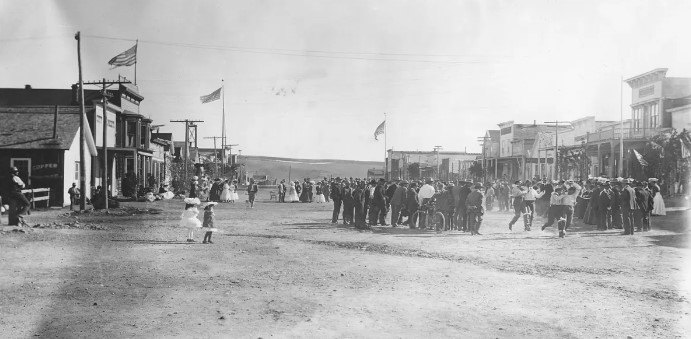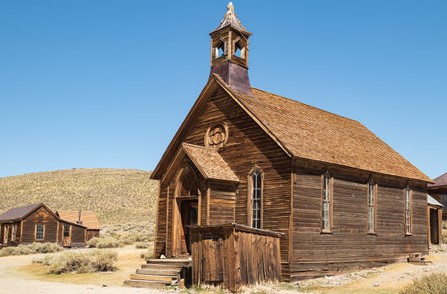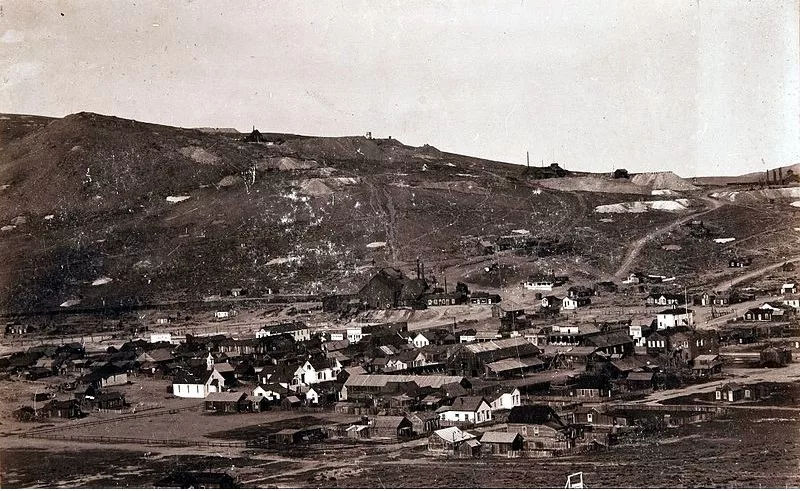
Bodie, California’s ghost town history isn’t just a story from the American Wild West. It gives us a rare and eerie peek into history. This gripping tale of gold, chaos, and boom and bust has made it one of the best-known and most intact ghost towns in the United States.
Like many other towns from this era, Bodie is ripe with online misinformation about the events and people that began this boomtown, partly because nobody recorded the events as they happened. Folks weren’t recording Bodie’s 1859 origins until nearly 20 years later.
This post contains affiliate links. If you purchase through these links, I may earn a commission at no extra cost to you.
The Beginnings of Bodie: 1859
Across the country, in Poughkeepsie, New York, lived a tin manufacturer who owned a shop on 345 Main Street. According to an 1850 US Census, his name was W.S. Bodey, his first name possibly being Wakeman, but Find A Grave lists it as Waterman. He was born on May 14, 1814. Some other writers, confusing him with a Dutchman from Poughkeepsie, report his name as William S. Bodey.
While Bodey was a well-respected man in his community, he wanted a more adventurous life than he was living in Poughkeepsie. So, after hearing that people were discovering gold in California, Bodey bid farewell to his wife and children and set sail for California, landing in San Francisco in 1849.
In 1859, W.S. Bodey found gold in the rough hills near Mono Lake, California. This discovery kicked off Bodie’s tale and set off the gold rush.
Not long after, in November 1859, Mr. Bodey lost his life in a blizzard. He never got to see the results of his hard work. Bodey and a half-Cherokee Native American companion, E.S. Black Taylor, ventured into a blizzard on a supply trip to Monoville and got lost. Bodey came to a point where he couldn’t go any further, so his companion left him, and Bodey froze to death. His body was found the following Spring when Black Taylor returned to the mines and buried him.
The town got its name “Bodie” because a sign painter made a spelling mistake, leaving a lasting mark on Gold Rush history. Check out Bodie’s Discovery Story to learn more about how Bodie was found.

The Boom Years: 1876-1878
From 1876 to 1878, the Standard Company hit a rich gold and silver vein, starting Bodie’s significant change. Over 7,000 people rushed to the area, hoping to get rich, causing Bodie’s population to explode. When Bodie, California, hit its peak, it became a busy mining center that drew in risk-takers, gamblers, and business owners. Soon after, the town got a name for being violent and wild, making it one of the West’s most dangerous places.
During its peak as a gold mining town, there was a lot of violence due to murders, shootouts, bar fights, and stagecoach holdings being common during this era. The city was well-known for its rowdy atmosphere, where gambling and opium use were every day. There was no duty-to-retreat law at the time, which made it difficult to convict people for murder with a fully armed population, and there was no justice for murder victims, leading to the formation of vigilante groups.
Life in Bodie: The 1880s
By the 1880s, Bodie, California, had built over 2,000 buildings, including numerous saloons, brothels, hotels, and a red-light district. Bodie’s Chinatown was experiencing frequent gunfights and robberies, which may or may not have been related to its opium den, making the town exciting but scary. Bodie was the epitome of a wild mining town where fortunes were made or lost overnight.
There is a rumor about Constable John Kirgan and his police officers carrying Colt Peacemakers during this era. However, this is a myth that has since been debunked. The thing is, the boomtown journalists of Bodie typically referred to sidearms as pistols, revolvers, or six-shooters without identifying the handguns. When they did recognize them, it was usually Colt self-cockers or British Bulldogs, and sometimes the antiquated Colt Navy revolver. The sole mention of a Colt Peacemaker appears in a newspaper story from January 21, 1881. The article describes a gunfight between Dave Bannon and Ed Ryan.

The Decline of Bodie
Like many gold rush towns, Bodie’s wealth only lasted a while. The supply of mineable material started declining in 1879, and gold and silver deposits began to run dry in the late 1880s, causing Bodie’s luck to turn sour.
Mines began closing, and residents began looking for and moving to newer mines in more promising locations. Bodie’s reputation for being one of the meanest mining towns in the West didn’t help matters. By 1915, Bodie was officially labeled a ghost town, with only a fraction of its original population remaining as major mining ended.
A Town Ravaged by Fire: 1932
A kitchen fire wiped out much of the town west of Main Street in 1892, and then Bodie’s decline culminated in 1932 when a second catastrophic fire swept through the town, destroying nearly 90% of its 2,000 buildings. Despite this devastating blow, enough of Bodie’s structures survived to give visitors a true sense of what life was like during its heyday.
Bodie Today: A State Historic Park
Bodie became a California State Historic Park in 1962, preserving the town in a state of “arrested decay. ” This means that Bodie is maintained just as it was found, without significant restoration or rebuilding, to retain the authentic feel of a ghost town. Today, visitors can explore over 100 structures, including the old Methodist Church, Bodie Bank, salons, a general store, and homes still filled with furniture and personal belongings left behind by residents who abandoned the town decades ago.
Visiting Bodie, California Ghost Town
History buffs like me love walking down dusty roads, looking inside windows, and picturing the lively town that used to exist in these quiet buildings. It feels like traveling back to the past. A trip to Bodie gives you a unique look at the wild days of the California Gold Rush. It is an eerie reminder of the American West’s ups and downs.

Why Visit Bodie?
The main reasons people visit are the authenticity of the ghost town, the opportunity to learn, and the photography.
- Authenticity: The Bodie State Historic Park preserves the history of Bodie, California’s ghost town, in its most genuine form. It isn’t a reconstruction or tourist attraction with relics. It is truly an authentic remnant of the past.
- Learning Opportunity: Visiting Bodie not only takes you back in time but also allows you to understand this untamed town’s many problems and successes. The history comes alive here.
- Photography: Bodie is perfect for taking pictures. The spooky weather, old buildings, and Sierra Nevada Mountains in the background create stunning scenes.
Bodie is a witness to the hardships, struggles, and toughness of those chasing riches in the Wild West. It draws more than just history buffs. But anyone keen to learn about American history should check it out.
Tips for Visiting Bodie on a Budget
A trip to Bodie won’t break the bank for travelers. Adults pay just $8, while kids get in for $5. There are no places to eat in Bodie, so pack a lunch and have a meal among the eerie old buildings. Visit Bodie on weekdays or outside the main season to avoid the crowds and have a much more relaxed time.
Bodie, California’s ghost town history, is a fascinating journey through time. A visit to this historic park offers an unforgettable experience that won’t break the bank. If you love history, are into ghost towns, or just want to do something different, be sure to put Bodie on your list of places to go.
If you see this after your page is loaded completely, leafletJS files are missing.

